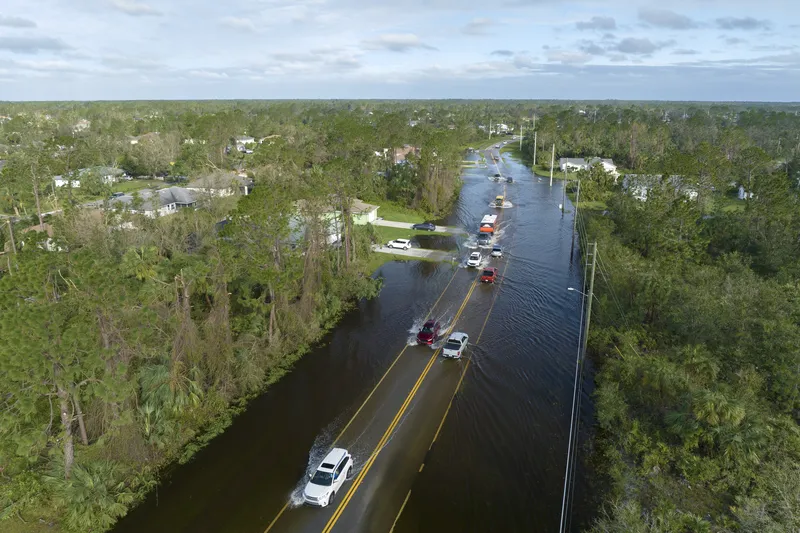The US House of Representatives has approved the Fixing America’s Surface Transportation (FAST) Act, five-year legislation to improve America’s roads, bridges, public transit, and rail transportation systems and reform federal surface transportation programs.
Among the FAST Act provisions are: US$100 million per year for intelligent transportation systems (ITS) research; Creation of a new US$60 million per year Advanced Transportation and Congestion Management Technologies Deployment Program designed to
December 7, 2015
Read time: 2 mins
The US House of Representatives has approved the Fixing America’s Surface Transportation (FAST) Act, five-year legislation to improve America’s roads, bridges, public transit, and rail transportation systems and reform federal surface transportation programs.
Among the FAST Act provisions are: US$100 million per year for intelligent transportation systems (ITS) research; Creation of a new US$60 million per year Advanced Transportation and Congestion Management Technologies Deployment Program designed to accelerate the deployment of new technology and innovations; US$15-US$20 million per year to establish a Surface Transportation System Funding Alternatives Program to provide grants to states to demonstrate user-based alternative revenue mechanisms to maintain the long-term solvency of the Highway Trust Fund.
It also includes funding eligibility for installation of V2I communication equipment within all major highway formula programs; Creation of a Nationally Significant Freight and Highway Projects competitive grant program funded at US$4.5 billion over five years and a National Highway Freight program providing US$6.3 billion in formula funding to states for projects including intelligent transportation systems and other technology to improve the flow of freight, including intelligent freight transportation systems.
“The FAST Act is one of the most important measures this Congress will pass,” said House Transportation and Infrastructure Committee Chairman Bill Shuster who also served as chairman of the Conference Committee. “This legislation will help repair and improve the critical transportation network that we all rely on every day to get to work, get our kids home safely from school, and get the goods and products we need. This bill is an investment in America and the infrastructure that underpins our economy.”
ITS America president and CEO Regina Hopper commented, “ITS America congratulates Congressmen Shuster and DeFazio, Senators Inhofe and Boxer, and Members of the Surface Transportation Reauthorization Conference Committee for working together to pass a bipartisan multi-year transportation bill that increases funding for America’s highways and transit systems, encourages new innovation, and leverages Intelligent Transportation Systems (ITS) to improve mobility for American families and businesses and strengthen our nation’s economic future.”
Among the FAST Act provisions are: US$100 million per year for intelligent transportation systems (ITS) research; Creation of a new US$60 million per year Advanced Transportation and Congestion Management Technologies Deployment Program designed to accelerate the deployment of new technology and innovations; US$15-US$20 million per year to establish a Surface Transportation System Funding Alternatives Program to provide grants to states to demonstrate user-based alternative revenue mechanisms to maintain the long-term solvency of the Highway Trust Fund.
It also includes funding eligibility for installation of V2I communication equipment within all major highway formula programs; Creation of a Nationally Significant Freight and Highway Projects competitive grant program funded at US$4.5 billion over five years and a National Highway Freight program providing US$6.3 billion in formula funding to states for projects including intelligent transportation systems and other technology to improve the flow of freight, including intelligent freight transportation systems.
“The FAST Act is one of the most important measures this Congress will pass,” said House Transportation and Infrastructure Committee Chairman Bill Shuster who also served as chairman of the Conference Committee. “This legislation will help repair and improve the critical transportation network that we all rely on every day to get to work, get our kids home safely from school, and get the goods and products we need. This bill is an investment in America and the infrastructure that underpins our economy.”
ITS America president and CEO Regina Hopper commented, “ITS America congratulates Congressmen Shuster and DeFazio, Senators Inhofe and Boxer, and Members of the Surface Transportation Reauthorization Conference Committee for working together to pass a bipartisan multi-year transportation bill that increases funding for America’s highways and transit systems, encourages new innovation, and leverages Intelligent Transportation Systems (ITS) to improve mobility for American families and businesses and strengthen our nation’s economic future.”










